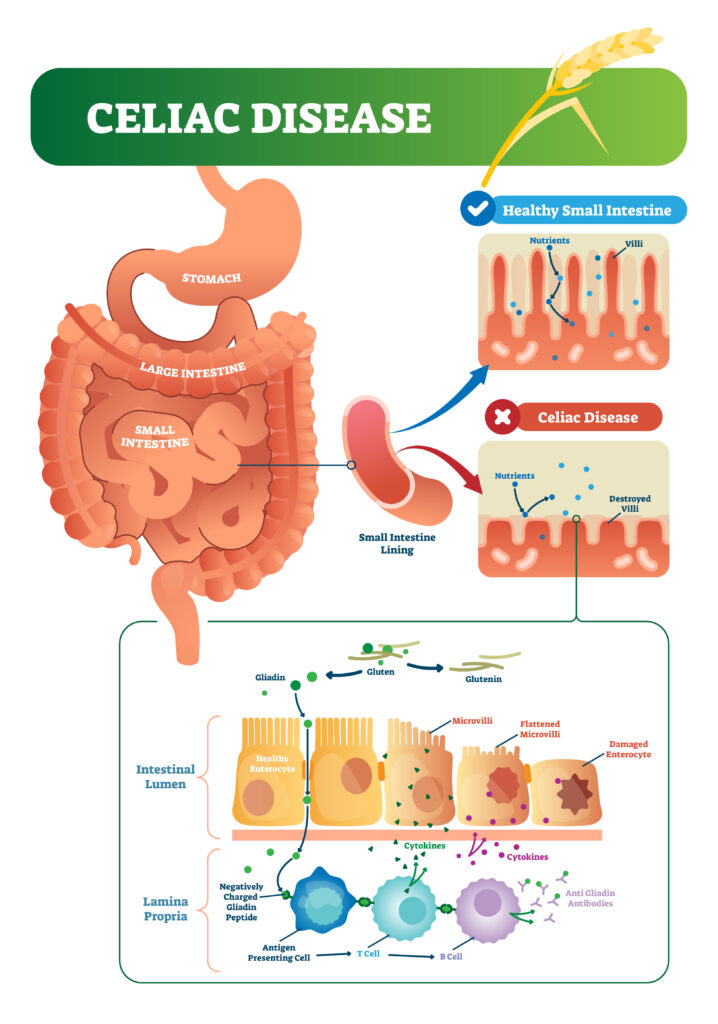What is Celiac Disease?
Celiac disease (CD) is an autoimmune disorder of the small intestine resulting from intolerance to gluten proteins and it afflicts nearly 1% of most populations (Schuppan 2009, Rubio Tapia 2010). The principal physiology is villous atrophy in the small intestinal epithelium triggered by the ingestion of cereal grains, such as wheat, rye, or barley. CD has no known cure and the only effective therapy is adherence to a lifelong gluten-free diet (GFD). Yet in practice it is virtually impossible to totally avoid gluten (Syage 2018). Patients are continuously exposed to low levels of gluten that can cause symptomatic pain and suffering and persistent histologic damage that can lead to other long-term health issues such as lymphoma, bowel cancer, osteoporosis, anemia, malnutrition, etc. (Kelly 2015, Green 2015). The burden of the disease is enormous on the individuals as well as their family and friends, who must adjust to the dietary and recovery needs of CD individuals. Thus, there is an acute need for non-dietary therapies for celiac disease.
The 3rd Gastroenterology Regulatory Endpoints and Advancement of Therapeutics (GREAT-3) conference sponsored by the FDA in 2015 specifically cited the need to develop treatments that address symptom distress due to inadvertent gluten ingestion and made a clear case for the need of measurement outcome tools relevant to the suffering of CD patients (Leffler 2015).

Celiac Disease Patient Resources
|
Patient Advocacy Groups |
Centers of Excellence |
Government Resources |
|
Celiac Disease Foundation |
Mayo Clinic |


